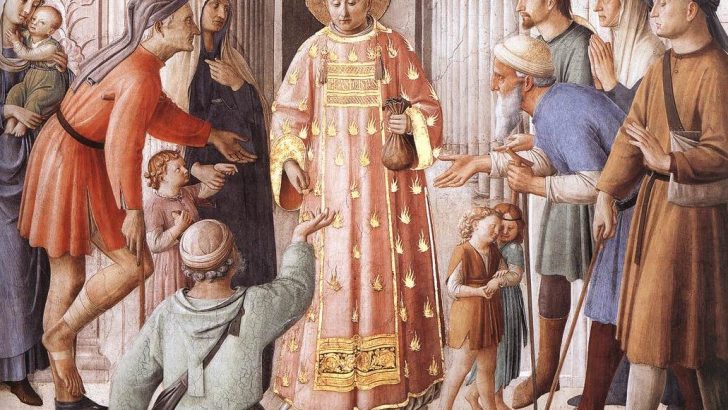The Notebook
Fr Bernard Healy
The alarm on my phone goes off at 5.50 am. I drag myself out of bed and try to say a prayer. After all, it’s Lent! Washed and dressed, I head downstairs and meet two of my companions here in Rome’s Irish College: fellow priests, one Nigerian, another Irish. For Lent we rise early each morning for Mass in the day’s Station Church. Some of the seminarians have started to gather as well. Checking our watches we step into the chill of the morning and begin our trek.
This morning, we have a 25-minute walk to San Lorenzo in Panisperna. Here, St Laurence was martyred by being roasted on a gridiron. One of the city’s seven deacons in the year 258 AD he shared in the administration of the Roman Church under Pope Sixtus II.
Persecution
That year a fresh persecution broke out against Christians, and after the Pope, the other six deacons and a number of priests had been executed, Laurence was hauled before a magistrate. Refusing to hand over the goods of the Church (most already distributed to the poor), the brave deacon was sent to his gruesome death.
This church of San Lorenzo, stands on the site of his martyrdom. Behind the altar a huge fresco recalls it. In the middle, Laurence is being roasted alive, his miraculous serenity in suffering seeming to provoke further outrage in the faces of his persecutors.
The small church fills up quickly – dozens of priests vest for the sacrifice and an influx of seminarians and young laity studying in Rome pack it to capacity.
This church, like so many others in the city, is a microcosm of the Church’s history. It stands on the spot of a martyr’s sacrifice and later served as a place of refuge for monks who fled persecution in the East. In the Middle Ages, San Lorenzo came into the hands of the Benedictines, but their corruption led to expulsion from the city. The nuns who succeeded them were little better and were sent packing in favour of an early community of Poor Clares. With the Poor Clares, the church was known as a place of prayer and generosity to the poor. The great 14th-Century mystic and reformer St Briget of Sweden frequently prayed before the crucifix that is still kept in the church.
Unification
The 1870s saw the unification of Italy and the confiscation of many convents by the State, including that at San Lorenzo. The Poor Clares found new accommodation nearby, but after almost eight centuries, this community is now on the verge of extinction.
The convent building became part of the physics department of the Sapienza University where Enrico Fermi and his team (The Via Panisperna Boys) broke new ground in our understanding of physics. Fermi and his Jewish wife would flee Italy’s fascist regime in 1938. The work he did at San Lorenzo would be crucial in giving the Americans the ability to split the atom, win the war and open the path for the possible devastation of all humanity.
As I prepare myself for Mass, I ponder this history – victories alternating with defeat, sanctity and shame, holiness and degradation. I glance around at all gathered for this Lenten Mass – many from America, a few from Ireland and other places where the Church has been battered of late. And yet, we share a joyful hope.
We are sustained by the prayer we offer together each day. Looking up at the fresco of St Laurence I imagined how things might have seemed at his time – the Pope and all his assistants put to death, the Diocese of Rome almost totally despoiled, and yet, that was the very time that Laurence and so many other witnesses won Faith’s victory, overcoming the world by their endurance and charity at the moment of apparent defeat.
Not a bad thing to remember in our time.
***
What is a Station Church? It’s part of a Lenten tradition dating back 17 centuries when the Pope would gather the people for prayers, a procession, and then Mass at one of the churches where the early martyrs were buried.
This church was known as a ‘station’ because it’s where people stopped/stood after the procession. Each day became associated with a church and in the papacy of St Gregory the Great (590-604) the list of ‘Stations’ was fixed. Nowadays, the North American College arranges Mass in English at each of the Station Churches in their turn at 7am each day of Lent. Making the pilgrimage on foot each morning is a popular Lenten devotion.


 “St. Lawrence Distributing Alms to the Poor,” by Tintoretto
“St. Lawrence Distributing Alms to the Poor,” by Tintoretto 